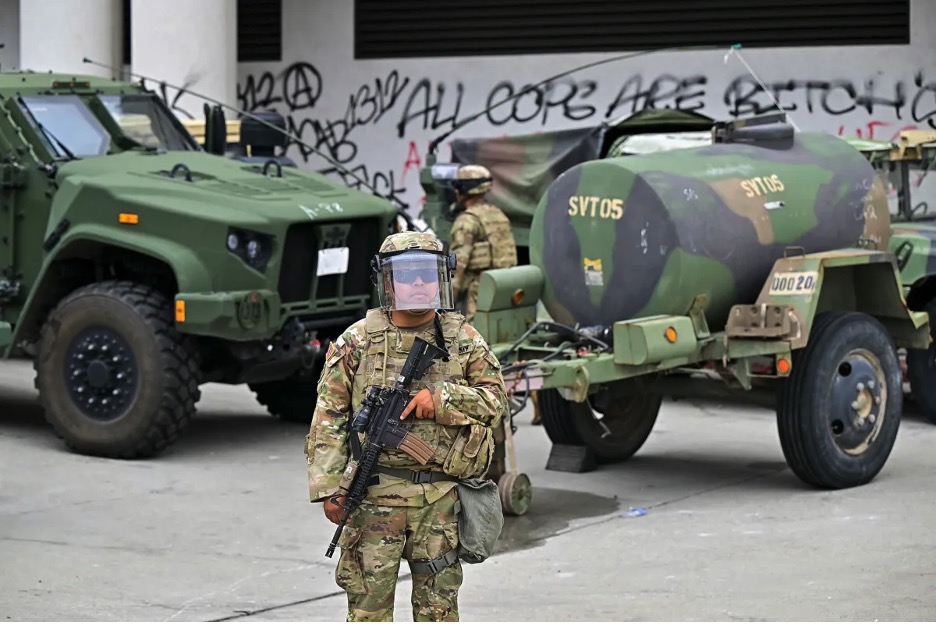CommentsDEEGAN ON LA-Westlake, one of the original neighborhoods for the gentry, was spiraling downward for many years but is now facing gentrification, and that inevitability is bringing objections about how the neighborhood is scaling upward.
Grand mansions once owned by the blue blood civic and social leaders, who built and lived in them, defined Westlake nearly a century ago. Today, Westlake, located 2.5 miles west of downtown -- consisting of the neighborhoods of Historic Filipinotown, MacArthur Park, Rampart Village and Westlake South -- is home to a largely Latino population, squeezed into the second densest neighborhood in Los Angeles, with 38,214 people per square mile. Neighboring Koreatown, the densest section of the city, has 42,611 people per square mile.
For many Latino immigrants, Westlake has been known as their gateway neighborhood, providing a welcoming sense of community for them. Fears loom that gentrification will undo all that, as increased rents start forcing residents out and destroying the very fabric of a community that has helped to sustain them.
Westlake, like Koreatown, is targeted for increased density. These two neighborhoods share common attributes: both are emerging mini-cities within the larger city of Los Angeles; they already have tall buildings, rather than low slung horizontal ones; and neither, despite Westlake’s glamorous high-life past, has an abundance of single family housing and the type of NIMBY owners who can be counted on to challenge density. In addition, both neighborhoods are along well-established mass transit routes. Through a developer’s eye, Westlake is seen as low-hanging fruit, ready to be plucked.
Lacking the involvement of homeowner NIMBY’s, the community has instead organized around an aggressive outreach group called the Coalition to Defend Westlake.
While CDW has its eye on preserving Historic Filipinotown, a piece of which is at the northern edge of Westlake, major development impacts are starting to crop up near MacArthur Park, the scenic heart of Westlake. Reclaimed from a long period of being a drug-dealing needle park, MacArthur Park has become respectable again, and is primed for gentrification.
Named after General Douglas MacArthur in honor of his World War II successes, MacArthur Park was once a deluxe venue. Urban legend reports that it was known as the “Champs-Élysées of Los Angeles” when it was a vacation destination, surrounded by luxury hotels. Although it became gang-infested during a later period, now, with gentrification, it contains the lake, an amphitheater, a bandshell, soccer fields, and a children's playground, along with a recreation center.
Westlake has become a tale of two approaches to gentrification: the northern edge centering on Historic Filipinotown, and the southern edge home to MacArthur Park.
In the north, a design district is being planned, which the community objects to. In the south, with no visible objection, high-rise, mixed use towers are showing up on the drawing boards, most notably the Lake On Wilshire that will turn an existing 14-story medical office building into a multipurpose building, with 478 housing units, a 220-room hotel, and a five-story multicultural performing arts center, with an 850-seat auditorium. There does not appear to be any organized challenge to this project at City Hall in Council File 17-1272.
In the north, the Planning Department would like to create a North Westlake Design District that would establish design standards for what they call a “pedestrian-friendly neighborhood” in Historic Filipinotown. The special district would be bounded by Beverly Boulevard, Temple Street, Third Street and Alvarado Street.
There is considerable and organized opposition to this special district by the Coalition to Defend Westlake (CDW) that has objected to the Department's plans and they are pushing back. In a public statement on March 10, the CDW said, “The draft for the North Westlake Design District (NWDD) does not reflect the needs and wishes of the neighborhood. Westlake and HiFi (Historic Filipinotown) residents reject their (LA Department of City Planning) top-down approach. Imposing planning and development decisions is just bad policy. We demand that the city drop the draft, and, instead, start with a collaborative community plan process led by your Community Plan Advisory Committees. The city planners have told us that they have gone back to work on the NWDD and are currently working on a new draft.”
In the south, the huge Lake On Wilshire development project is moving ahead with minimal opposition. Is South Westlake being short-shrifted because all the community agitation is focused on “Hi-Fi” in North Westlake? Is the absence of resistance in South Westlake laying out the welcome mat to developers along Wilshire?
Something is missing. In the north we hear community noise. In the south, silence. Which of these two approaches will be more beneficial for Westlake overall: a community-driven (as opposed to the Planning Department) “design district” in Historic Filipinotown or developer-dominated “towers,” with a Planning Department sign-off, along MacArthur Park?
The louder voices -- in this case, the Coalition to Defend Westlake for preserving Historic Filipinotown -- may prevail and influence the design district, while the silent, defender-less southern section, a historic gateway for Latino immigrants, may get what it mutely accepts: gentrification that reshapes Westlake with unaffordable housing causing an exodus from the community.
It’s like a sleight of hand: The attention-getting efforts by the CDW to call the shots in HiFi could end up distracting the community from the major development surge occurring near MacArthur Park. And at that point who wins?
(Tim Deegan, is a civic activist whose DEEGAN ON LA weekly column about city planning, new urbanism, the environment, and the homeless appear in CityWatch. Tim can be reached at [email protected].) Edited for CityWatch by Linda Abrams.
















